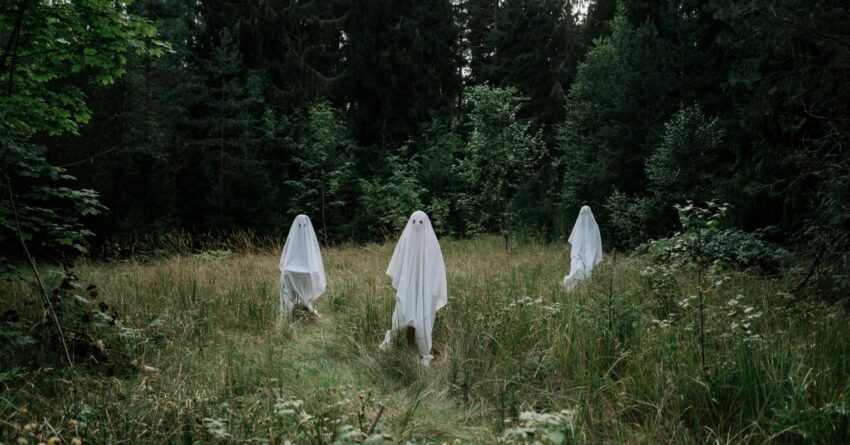
Source: Cottonbro Studio/Pexels
It’s October, and all around us are the smells of fall. The leaves are falling, pumpkins are lined up in grocery store windows, and I’m wearing my favorite hoodie on cool morning runs. Most importantly for me, Halloween decorations are starting to pop up, marking the beginning of the spookiest season of the year.
As someone who researches fear, I absolutely love Halloween—I love horror movies, haunted houses, skeletons lining neighbors’ walkways, and creepy crawlies adorning trees and bushes along my street. Some people really hate Halloween and hate to be afraid, which is reasonable, as fear isn’t the most comfortable of emotions. Others find excitement in this spooky season, as it is a way to feel fear without feeling threatened in any real way.
Why do some of us feel discomfort in the face of a haunted house while others are excited? Why do some avoid scary movies like The Plague while others seek them out? Do we all experience fear a little differently?
The old-fashioned view of emotions like fear is that it is universal and evolutionarily endowed to protect us from danger. In fact, researchers have provided evidence that people from all over the world can recognize the same basic emotions, including fear, happiness, anger, and sadness, from individuals from any country, regardless of whether they have experience with the culture or language (Ekman & Friesen, 1971). According to this perspective, fear is something that exists in all people and lives in the brain—more specifically, in a region called the amygdala, which has been shown to be active during fear learning and when looking at photos of fearful faces.
This sounds like a simple enough story and appeals to our intuitions, as, indeed, fear does seem like an experience that we share with everyone we know. But life is never simple, despite our best intentions, and neither is fear.
It is true that fear is somewhat universal in that we all experience some form of it. But there are cultural variations in the way that fear is expressed and experienced and in the kinds of situations that make us afraid. In other words, fear doesn’t look the same all over the world.
First of all, fear looks different from place to place.
In one study, researchers traveled to a remote group of people who are culturally isolated from Western industrialized countries and populations. The Trobrianders of Papua New Guinea reside on an isolated set of islands, live in traditional indigenous villages, and maintain a lifestyle of subsistence farming and fishing. Most importantly, they have little contact with people on mainland New Guinea and the culture there.
When testing Trobriander adolescents on their recognition of basic emotional facial expressions, they interpreted a traditional fear face as expressing anger. In fact, many Westerners will also mistake fear for anger if presented in an anger-eliciting situation. This suggests that even the most basic fearful expressions don’t mean the same thing everywhere and that context is important in interpreting an emotion, even one as basic as fear (Crivelli et al., 2006).
This is even true in the brain. In a sample of White and Japanese participants, researchers reported that the amygdala responds more to the fear faces of one’s own culture than to the fear faces of another culture. This wasn’t the case for faces in general (e.g., neutral faces) but was specific to fear (Chiao et al., 2008), suggesting that there are subtle differences in the way people in two cultures express fear that is recognizable in the brain.
We also vary in the kinds of things that scare us.
In her book Scream: Chilling Adventures in the Science of Fear, sociologist Margee Kerr describes visiting haunted houses in different countries, observing the differences between what scares us Americans versus what scares people living in other countries like Japan.
In Japanese haunted houses, for example, she noticed that when afraid, many people (even strangers!) will cling together at particular scary moments in a makeshift huddle. Unlike the American instinct to run away, this could reflect the more collectivist nature of Japanese culture, where the well-being of the group is put before the individual, in contrast to Western cultures that stress the importance of autonomy and the individual over the group.
Further, in Japan, there is a strong belief in ghosts and spirits, especially ghosts that had a traumatic death. According to the lore, these ghosts stay on Earth to torment the living, and thus, much of what you see in Japanese haunted houses and movies are tormented ghosts with a long and sordid backstory. We like our ghosts in the U.S., but our horror movies focus more on the living, with witches and monsters and murderers wielding large bloody axes or chainsaws, which Kerr believes reflects our focus on stories about heroes who have to save the day. In Japan, horror is mostly focused on the afterlife and ghosts instead of murderers and other monsters, and it is more focused on the past. Just think about American horror classics like Scream or Halloween, which are about serial murderers, and compare those to Japanese movies like The Ring and The Grudge, which focus on ghosts of people who died horrible deaths.
The point is we’re all different, and although most of us experience fear, we all experience it differently and for different things. Some of us don’t like to be afraid at all. Others like the thrill of being spooked.
If you’re looking for an extra jolt, try out horror movies and haunted houses with a group of friends. Indeed, you have more of a physiological response to a haunted house when you experience it with friends than with strangers or alone (Tashjian et al., 2022). So this Halloween, huddle with some friends for an extra dose of spooky, or just huddle with them for warmth from the cool fall air if horror isn’t your thing. After all, we all experience fear a little differently.
